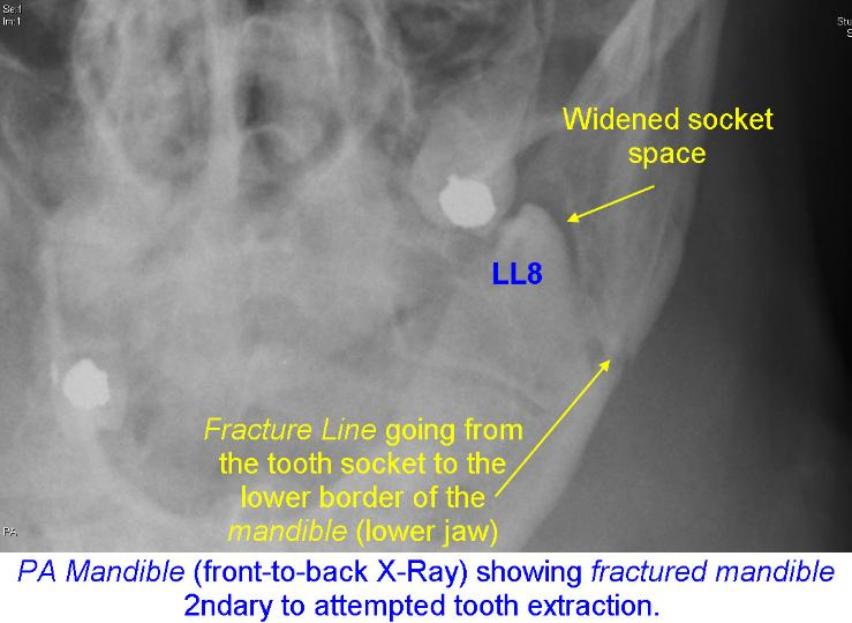Fractured Upper / Lower Jaw secondary to Tooth Removal
Incidence: 2 – 4% (including alveolar and lingual plate fractures, so the incidence of actual fractures of the upper and lower jaws is likely to be much less. Some studies have cited 0.0049% and also 0.29%).
This is probably the most feared of all complications following Minor Oral Surgery and like the majority of them, is largely preventable. It is a recognised complication of lower wisdom tooth removal and should be listed as such on a routine consent form.
Fracture of the mandible / lower jaw is a very unpleasant but fortunately rare complication that is associated almost exclusively with the extraction of impacted lower wisdom teeth.
The peak incidence is in patients over 25 years of age with a mean of 40 years. As men have a greater masticatory (chewing) force, men are thought more likely to have ‘late’ fractures (these occur 13 – 21 days post-op).
There are a number of predisposing conditions, such as:
- use of excessive force with the dental elevator, when an adequate pathway for removal of the impacted tooth has not been created
- mandibular atrophy (reduced height and width of jaw)
- deeply impacted tooth
- a tooth with ‘firm anchorage’ / bulbous roots / hypercementosis (increased thickness of root cement)
- extensive œdentulous (toothless) regions
- an ankylosed (fusion of tooth with surrounding bony socket) tooth
- osteoporosis and
- the presence of associated pathology such as a cyst (dentigeous cyst) or tumour (ameloblastoma).
Useful Articles & Websites
J Oral Maxillofac Surg 2000. Mandibular Fracture After 3rd Molar Removal
J Oral Maxillofac Surg 2000. Discussion. Mandibular Fracture After 3rd Molar Removal
J Oral Maxillofac Surg 2002. Immediate & Late Mandibular Fractures After 3rd Molar Removal
J Can Dent 2004. Third molars may double the risk of an angle fracture of the mandible
EBD 2004. 3rd Molars may double the risk of an angle fracture of the mandible
BDJ 2016. Letters to the Editor. Oral Surgery. Mandibular Fracture Risk





